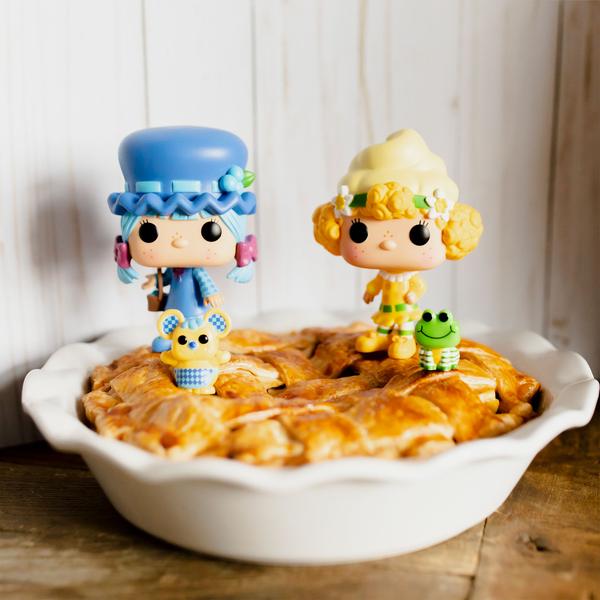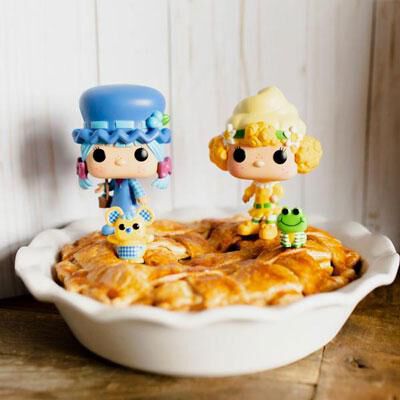
Comedy. Revenge. Passion. Nostalgia. Community. Like pi itself, the significance of this beloved baked dish is endless, transforming from comedic prop to symbol of the American consciousness to weapon. Indeed, it's difficult to believe that the same dessert that Don McLean sang about to express nostalgia in 1975 would be used in 2011's The Help by housemaid Minnie Jackson to undermine centuries of racist oppression. The fact that Don McLean's “American Pie” would shoot to the top of the charts for four weeks and Octavia Spencer would win an Oscar for Best Supporting Actress for her portrayal of Minnie Jackson just goes to show that pie can be sweet, but it can also be poignant.
The Inquisitive Eater's “Pie Plots in ‘Waitress'” touches on the dessert's vast range of meaning, stating, “For all the parts pie plays, it might as well be a main character. It's a symbol of traditional American culture, a mediator of power, and a catalyst of action.” The 2007 film is essentially a love letter to pie, from the opening shots depicting “close-ups of sweet batter poured into a pan, apple slices tossed with bare hands, molten chocolate poured over a pie crust, and glossy cherries tumbling into a pie pan” to the song “Baby Don't You Cry (The Pie Song)” that plays over the concluding credits:
“Baby don't you cry
Gonna make a pie
Gonna make a pie with a heart in the middle
Baby don't be blue
Gonna make for you
Gonna make a pie with a heart in the middle
Gonna be a pie from heaven above
Gonna be filled with strawberry love
Baby don't you cry
Gonna make a pie
And hold you forever in the middle of my heart.”
The television series Pushing Daisies which ran for 22 episodes between 2007 and 2009 is equally preoccupied with pie being primarily set in a restaurant called the Pie Hole run by a man the narrator frequently refers to as The Piemaker. This black comedy—described in Wikipedia as a “forensic fairy tale”—has an undeniably macabre tone. Death and murder are prominent themes as the Piemaker possesses the magical and inexplicable ability to bring dead things back to life. If death is omnipresent and inescapable, pie represents life.
“Candy might be sweet but it's a traveling carnival blowing through town,” says the Piemaker who has devoted his life to making pie. “Pie is home. People always come home.”
While the Piemaker might be biased, in a show filled with death and decay pie represents creation and life. When Ned was a child, his mother died in front of him while making a pie, creating a formative memory intertwining life, death, home and pie in the future piemaker's mind. If that sounds like a heavy symbolic burden for the humble dessert to carry, Pushing Daisies is not alone in assigning the dessert such significance.
Even On the Road, Jack Kerouac's ode to counterculture in all its jazzy, drug-addled glory had a soft spot for America's defining dessert. In “Kerouac Was a Comfort-Food Freak” journalist Anneli Rufus documents Kerouac's frequent pie references:
- “Along about three in the afternoon, after an apple pie and ice cream in a roadside stand, a woman stopped for me in a little coupe.”
- “I went to sit in the bus station and think this over. I ate another apple pie and ice cream; that's practically all I ate all the way across the country, I knew it was nutritious.”
- “I ate apple pie and ice cream—it was getting better as I got deeper into Iowa, the pie bigger, the ice cream richer.”
- “He came booming into the diner, calling Maw's name, and she made the sweetest cherry pie in Nebraska, and I had some with a mountainous scoop of ice cream on top.”
But if pie can represent the warmth of community and connection, it's also been used extensively and to powerful effect as a tool of revenge. Perhaps the earliest example of this is William Shakespeare's play Titus Andronicus likely written between 1588 and 1593. In an unsavory and horrific bloodbath that sounds like something out of a Quentin Tarantino film, the protagonist murders Chiron and Demetrius and bakes them into a pie which he feeds to their unknowing mother. Four lines of the cruelest iambic pentameter ever written reveal Titus' culinary coup:
“Why, there they are, both baked in this pie;
Whereof their mother daintily hath fed,
Eating the flesh that she herself hath bred.
‘Tis true, ‘tis true, witness my knive's sharp point.”
The Victorian melodrama centered around the story of Sweeney Todd, also known as the demon barber of Fleet Street, adopts a similar conceit: the barber murders customers and turns their bodies over to the proprietor of a meat pie shop who bakes them into pies. And that's not an end to the lengthy and grotesque history of revenge pies. As previously mentioned, The Help's Minnie Jackson offers her former employer a chocolate pie as a supposed apology but a secret ingredient transforms the apology into a brilliant act of revenge.
In the 1986 film Heartburn, Rachel Samstat grapples with her husband's infidelity, ultimately ending her marriage at a dinner party by shoving a homemade Key lime pie in his face. While the tone of this particular scene is a delicate balance of pathos and comedy, under more traditional circumstances a pie to the face is a longstanding comedic and cinematic tradition. Silent film actress, screenwriter, director and producer Mabel Normand is credited with throwing the first pie for entertainment purposes. The article “Pie-Throwing in Comedy: A Brief History” describes the historic moment: “One day in 1913 Mabel Normand, attempting to get the famously cross-eyed Ben Turpin to laugh, picked up a lemon meringue pie which some workmen had brought to lunch with them and suddenly smashed it into Turpin's face … When Keystone Studios founder Mack Sennett saw the scene in the projection room, pie throwing promptly joined pratfalls and mad chases as staples of Keystone comedies.”
For five decades, pies ruled the comedy genre culminating in the 1965 film The Great Race which set a record for the most pies ever filmed in a pie fight. Warner Bros. dropped $200,000 to shoot the four minute and 20 second scene, including spending $18,000 just for the pies which included raspberry, strawberry, blueberry and lemon. Shooting the scene took five days during which actress Natalie Wood briefly choked on pie filling and actor Jack Lemmon was “knocked out a few times” prompting him to state that “a pie hitting you in the face feels like a ton of cement.”
It would be impossible to document every movie, show and song devoted to the delicious pastry though honorable mentions must include Game of Thrones character Hot Pie who, fittingly, just wants to work as a baker; pumpkin pasties from the magical wizarding world of Harry Potter and Twin Peaks' FBI special agent Dale Cooper's obsession with the pies at the Double R Diner. We'll give Special Agent Cooper the final word on pies in popular culture: “This must be where pies go when they die.”
Pie Recipes to Indulge in This Pi Day
Toriel's Butterscotch Cinnamon Pie
Tom Paris & Harry Kim's Fudge Ripple Cherry Pie







 Items in your cart may be affected with updated location.
Items in your cart may be affected with updated location.


